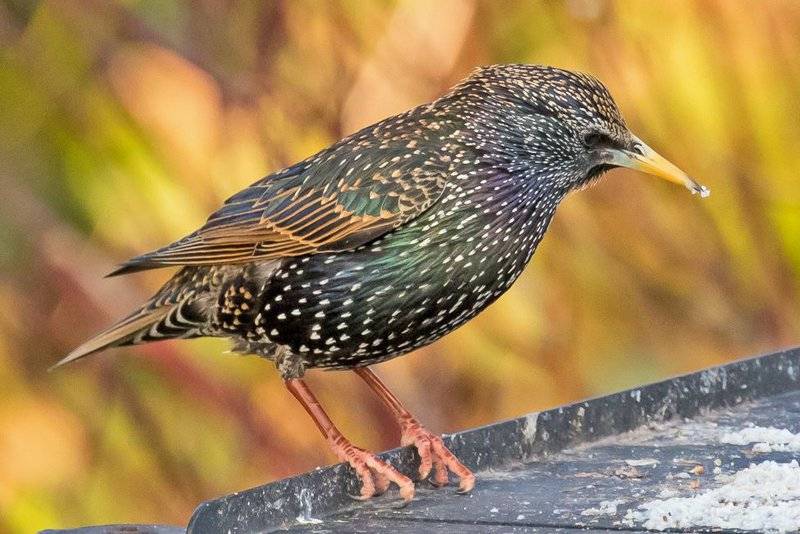Starlings, with their iridescent feathers and intricate behaviors, are captivating birds that have long captured the fascination of bird enthusiasts and researchers alike. These adaptable creatures exhibit a range of remarkable characteristics that set them apart from other avian species. Here are five fascinating facts about starlings:
1. Mesmerizing Murmurations:
One of the most spectacular sights in the natural world is the mesmerizing phenomenon known as a starling murmuration. Thousands of starlings come together in stunning aerial displays, creating breathtaking shapes and patterns in the sky. The birds move in perfect synchrony, creating the illusion of a dynamic, fluid organism. Scientists believe that these murmurations serve multiple purposes, including predator avoidance and information exchange about feeding locations.
2. Vocal Imitators: Starlings are renowned for their remarkable ability to mimic sounds from their environment, including human-made noises. They are known to replicate car alarms, cell phone ringtones, and even snippets of human speech. This mimicry ability is attributed to their complex syrinx, the avian vocal organ. While the exact purpose of their mimicry remains a subject of study, it is likely that mimicking other bird species can provide starlings with a competitive advantage during territorial disputes.
3. Invasive Success:
The common starling, native to Europe, has achieved impressive success as an invasive species in various parts of the world. Introduced to North America in the late 19th century by well-intentioned individuals seeking to introduce birds mentioned in Shakespeare's works, starlings have thrived in urban and agricultural landscapes. While their adaptability and resourcefulness are noteworthy, their prolific nature has led to conflicts with native bird species and human activities.
4. Nesting Niche: Starlings are cavity-nesting birds, meaning they nest in holes and cavities. They often compete with native cavity-nesting species for nesting sites, which has contributed to their impact as an invasive species. Starlings are known to evict other birds from nesting sites, leading to concerns about declining populations of certain native species. Understanding their nesting behavior is crucial for managing their interactions with other bird species.
5. Dietary Diversity:
Starlings are omnivores with a diverse diet that includes insects, fruits, seeds, and human food scraps. This adaptability to various food sources has been instrumental in their successful establishment in urban environments. While their foraging habits provide ecological benefits by controlling insect populations, they can also be considered pests when they raid agricultural crops.
In conclusion, starlings are more than just common birds – they are fascinating creatures with an array of intriguing qualities. From their captivating murmurations to their vocal mimicry, invasive success, nesting behaviors, and dietary flexibility, these birds continue to intrigue researchers and bird enthusiasts around the world. Observing and studying these behaviors not only enriches our understanding of bird biology but also reminds us of the intricacies of the natural world around us.


